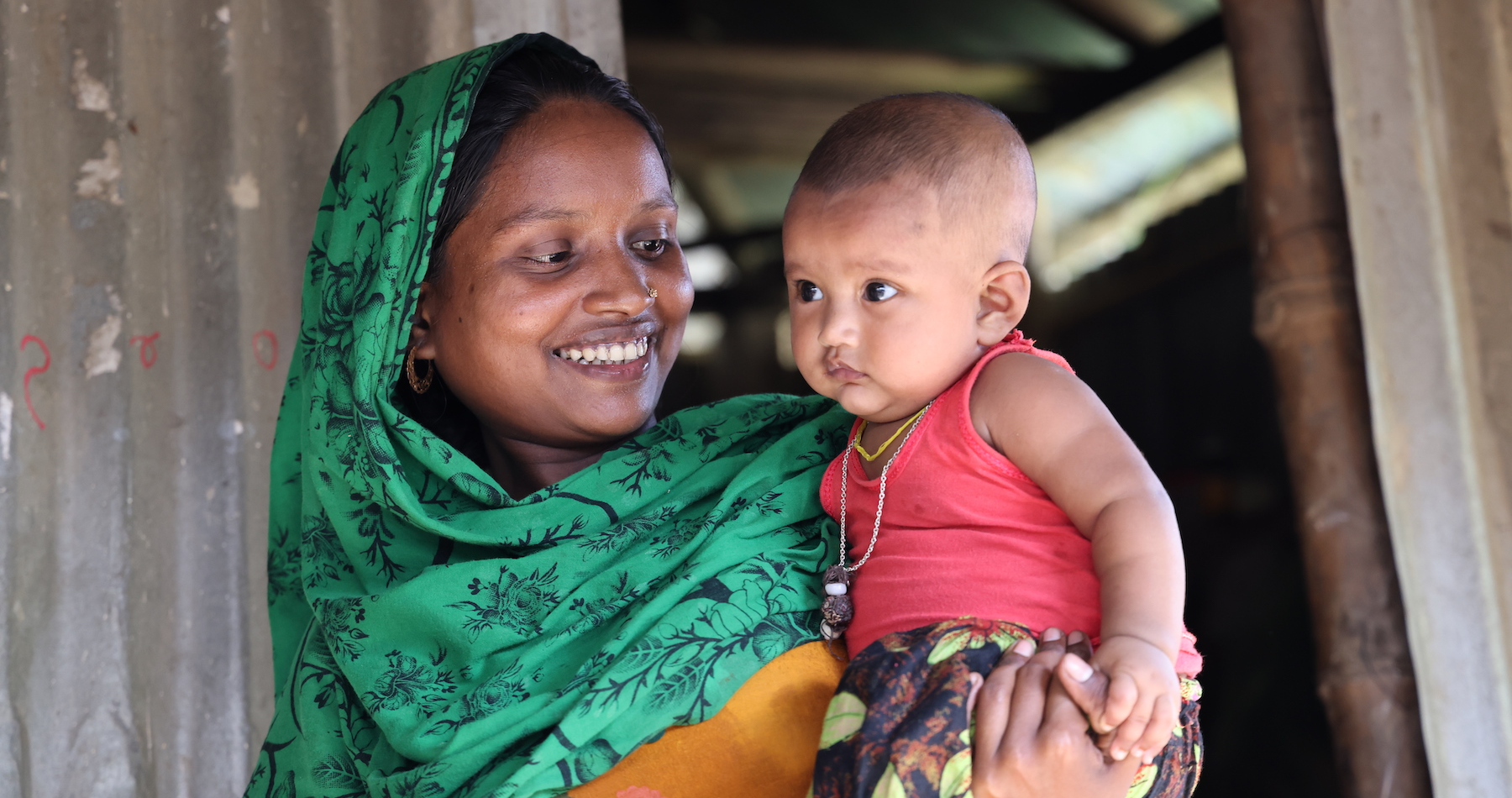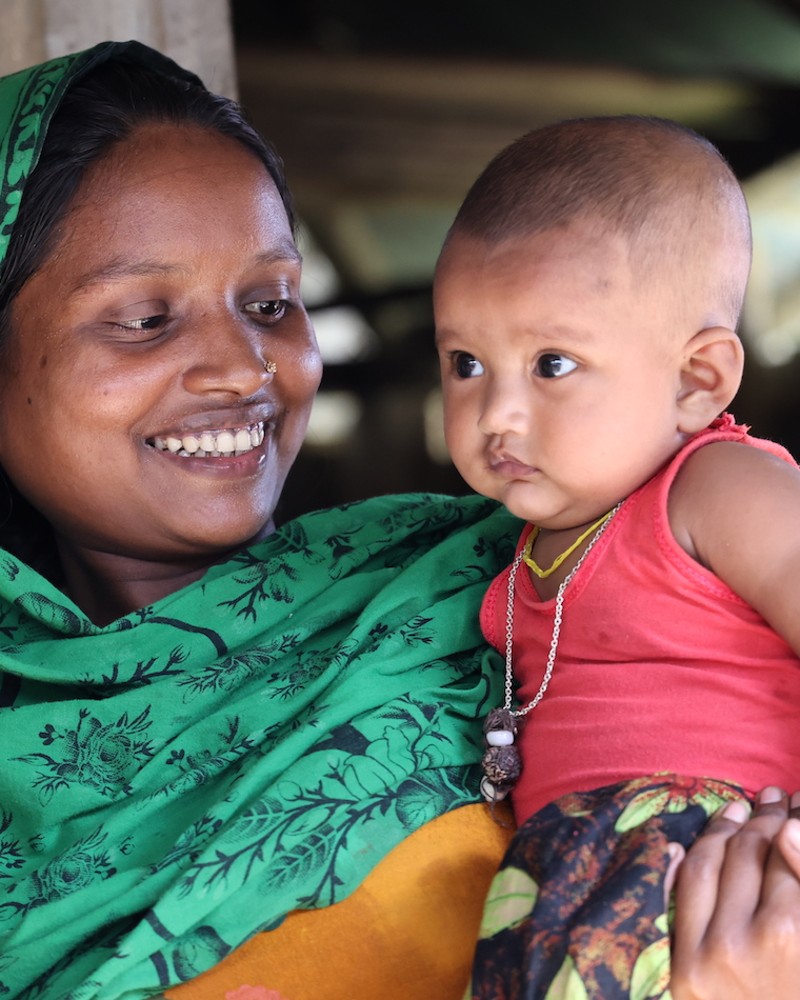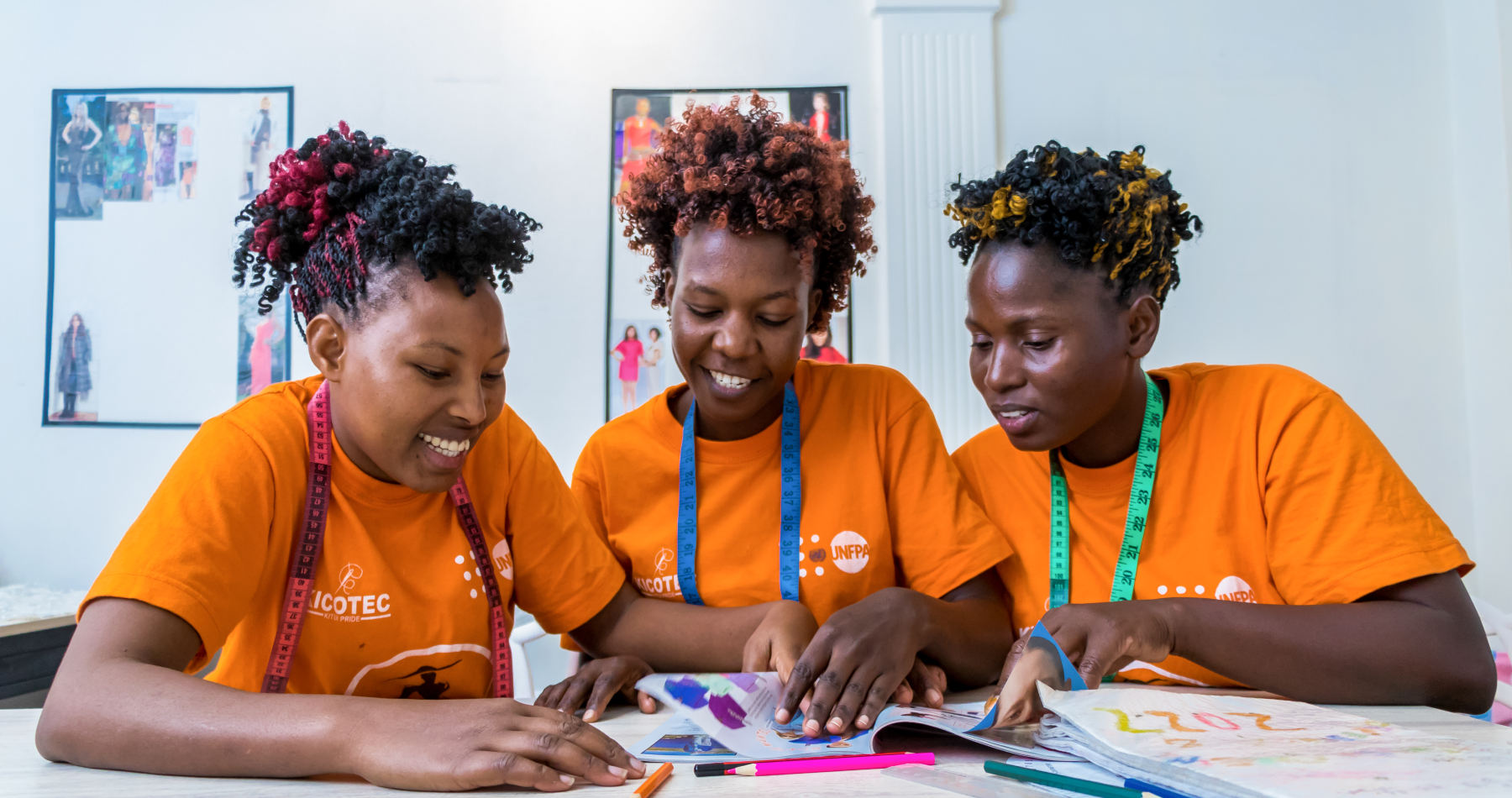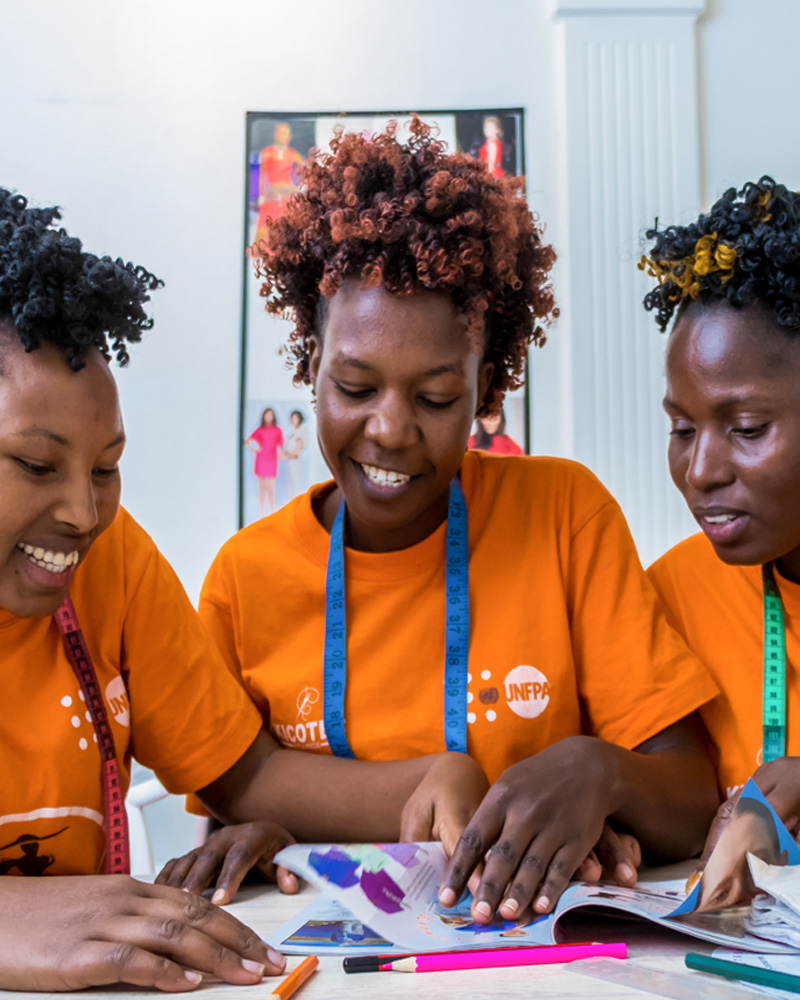
2022-2023 report


2022–2023 report Delivering on UNFPA’s strategic plan
The end of 2023 heralded the midpoint of UNFPA’s 2022-2025 Strategic Plan as well as the start of ICPD30, a year-long process of reviewing progress made since the 1994 International Conference on Population and Development. Both offer an opportunity to reflect on the effectiveness of UNFPA’s work and the challenges ahead, ensuring we can adapt and succeed in delivering a world where every pregnancy is wanted, every childbirth is safe and every young person's potential is fulfilled.
In the last 30 years, the world has made remarkable progress in advancing the sexual and reproductive health and rights of individuals. The number of women using modern contraceptives has doubled since 1994. The number of women dying from preventable complications of pregnancy and childbirth has fallen by one third since 2000. The ratio of skilled health personnel has increased 41 per cent between 2000 and 2022. These achievements show that rapid and sustainable progress can be made, when sexual and reproductive health and rights are considered policy priorities.
Yet today the pace of progress is stalling, and by some measures even reversing. As the world grapples with multiple overlapping crises and economic disruptions, inequalities within and among countries are growing, and marginalized people – from LGBTQIA+ people to people of African descent to migrants and persons with disabilities and more – are being left behind. The slowed pace of advancement has put the world significantly off-track in achieving UNFPA’s three transformative results, which aim to end unmet need for family planning, end preventable maternal deaths, and end gender-based violence including harmful practices.
A mid-term review of UNFPA’s Strategic Plan therefore calls for greatly accelerating efforts to achieve these transformative goals, including through internal shifts to respond to growing uncertainty around the world. UNFPA will be strengthening its work addressing discriminatory gender and social norms and changing population dynamics. UNFPA will also be investing in the production of quality population data and enhancing its work in analytics and foresight to better design and implement future-fit programmes.
The mid-term review also found that UNFPA had been able to achieve significant results amid the volatility of recent years. Through 2022 and 2023, UNFPA supported 2.4 million safe births in humanitarian-affected countries, and provided family planning commodities that averted nearly 65,000 maternal deaths and 9.5 million unsafe abortions, in addition to facilitating longer-lasting changes by guiding policy development, strengthening systems and promoting positive social norms.
Over the second half of UNFPA’s 2022-2025 Strategic Plan, the organization will build on these achievements, with strong emphasis on: strengthening data analytics capacity and foresight development; promoting innovation, especially innovations by women and youth; strengthening humanitarian response; growing strategic partnerships; addressing the root causes of unmet need, gender-based violence and inequality; and supporting youth-, women- and grassroots-led organizations. As we look ahead to navigating an increasingly unpredictable world, there remains one unshakeable certainty: UNFPA delivers.
Delivering worldwide


31.2 MILLION unintended pregnancies were prevented*
64,730 maternal deaths were averted*
273,500 girls were saved from female genital mutilation
9.5 MILLION unsafe abortions were prevented*
68.7 % of the population that was scheduled to be counted in the 2020 census round was counted
11.5 MILLION new sexually transmitted infections were averted*
65% of countries strengthened civil registration and vital statistics systems
18,600 women and girls with obstetric fistula received treatment
2.4 MILLION safe deliveries were assisted in 39 humanitarian crisis-affected countries
145 MILLION couple years of protection were provided by UNFPA-procured contraceptives*
CHANGING SYSTEMS TO CHANGE THE WORLD
74 per cent of countries integrated sexual and reproductive health into universal health coverage-policies
66 per cent of countries integrated sexual and reproductive health and rights into national youth policies and plans
53 countries made new commitments to achieve the three transformative results
48 per cent of countries integrated population change into sexual and reproductive health policies
49 per cent of countries had laws and regulations that support the realization of universal access to sexual and reproductive health
36 per cent of countries had a national mechanism to address discriminatory gender and social norms
58 per cent of countries had social movements that advocated against harmful gender and social norms
36 per cent of countries had operationalized in-school comprehensive sexuality education
Donors and contributions in millions of US$
Norway
116,950,416
Germany
111,347,528
Sweden
110,144,263
United States of America
81,180,000
Netherlands
73,748,064
Denmark
66,796,474
Finland
66,355,912
Switzerland
34,563,039
Japan
33,060,000
Canada
22,811,321
United Kingdom of Great Britain and Northern Ireland
20,089,666
Belgium
19,461,494
Australia
13,306,647
Luxembourg
9,735,067
Ireland
9,373,796
New Zealand
7,504,707
Italy
5,848,133
Individual Giving Programme (IGP)
4,634,816
China
2,890,000
Iceland
2,411,196
United Nations
448,609,205
United Kingdom of Great Britain and Northern Ireland
234,955,687
United States of America
216,151,005
European Commission
133,391,149
Norway
109,135,992
Canada
101,611,723
Netherlands
92,370,176
Australia
76,619,519
Denmark
75,638,722
Sweden
74,587,718
France
52,030,075
Republic of Korea
48,304,849
Japan
36,858,865
Italy
28,115,979
Democratic Republic of Congo
24,739,911
Switzerland
24,463,910
Spain
24,081,087
Luxembourg
23,325,802
Germany
21,140,296
Bangladesh
19,816,832
Albania
10,000
Algeria
20,000
Angola
80,000
Armenia
6,000
Australia
13,306,647
Austria
527,891
Azerbaijan
20,000
Bangladesh
70,000
Barbados
5,000
Belgium
19,461,494
Bhutan
11,850
Bolivia (Plurinational State of)
6,000
Bosnia and Herzegovina
2,039
Burundi
1,921
Cameroon
17,299
Canada
22,811,321
Chile
12,000
China
2,890,000
Colombia
22,274
Costa Rica
9,241
Cuba
5,050
Cyprus
32,100
Denmark
66,796,474
Dominican Republic
29,950
Egypt
41,399
El Salvador
4,000
Equatorial Guinea
100,000
Eritrea
10,000
Estonia
32,362
Eswatini
18,300
Ethiopia
1,139
Finland
66,355,912
France
2,197,759
Gabon
65,760
Gambia
9,875
Georgia
40,000
Germany
111,347,528
Guyana
9,914
Iceland
2,411,196
Individual Giving Programme (IGP)
4,634,816
India
990,912
Indonesia
25,128
Iraq
69,825
Ireland
9,373,796
Israel
10,000
Italy
5,848,133
Japan
33,060,000
Jordan
49,930
Kazakhstan
13,000
Kenya
20,000
Kuwait
20,000
Lao People's Democratic Republic
6,000
Luxembourg
9,735,067
Madagascar
14,001
Malaysia
30,000
Maldives
5,000
Mauritania
33,204
Mauritius
4,493
Mexico
94,089
Micronesia (Federated States of)
3,000
Mongolia
4,000
Morocco
11,735
Nepal
4,534
Netherlands
73,748,064
New Zealand
7,504,707
Nicaragua
5,000
North Macedonia (Republic of)
1,025
Norway
116,950,416
Oman
10,000
Panama
20,000
Peru
4,042
Philippines
79,147
Portugal
747,405
Qatar
30,000
Republic of Korea
325,012
Romania
20,000
Russian Federation
600,000
Rwanda
10,000
Saint Kitts and Nevis
1,500
Saudi Arabia
250,000
Serbia
10,000
Singapore
10,000
Slovakia
10,269
Slovenia
65,199
South Africa
75,020
Spain
1,088,780
Sweden
110,144,263
Switzerland
34,563,039
Tajikistan
2,331
Thailand
292,398
Togo
9,444
Trinidad and Tobago
10,016
Tunisia
17,880
Türkiye
50,000
Turkmenistan
16,000
Uganda
17,856
United Kingdom of Great Britain and Northern Ireland
20,089,666
United Republic of Tanzania
3,022
Uruguay
15,000
United States of America
81,180,000
Uzbekistan
10,000
Viet Nam
20,000
Zimbabwe
30,000
* All figures cumulative for 2022–2023.
1 In 2022, a revised accounting policy was introduced, in line with the International Public Sector Accounting Standards. UNFPA was requested by the United Nations Board of Auditors to modify its accounting policy for revenue recognition for contributions to core resources. Because of this change, all figures for both core and non-core resources in 2023 are shown as contributions received, i.e. the amount of cash transferred to UNFPA in a particular year. The figures for 2022 have been restated to also reflect contributions received to allow for comparability of data between 2022 and 2023. Data prior to 2022 remain as reported in previous years and in line with previous reporting standards.
2 Non-core contributions (also referred to as "other", "earmarked" or "restricted" contributions), represent resources that are earmarked as to their use. The amounts represent contribution revenue for trust funds. They include multi-year co-financing agreements which were recognized in 2022, in accordance with UNFPA accounting policies. Programme implementation continues to be linked to actual receipt of resources.
Programme and institutional budget Expenses by region in millions of US$
2022
2023
2022-2023 Cumulative
East and Southern Africa
2022276.4
2023284.2
2022-2023 Cumulative560.6
West and Central Africa
2022182.8
2023194.3
2022-2023 Cumulative377.1
Arab States
2022192.3
2023230.6
2022-2023 Cumulative422.9
Asia and the Pacific
2022315.0
2023249.7
2022-2023 Cumulative564.7
Latin America and the Caribbean
202298.8
202397.2
2022-2023 Cumulative196
Eastern Europe and Central Asia
2022127.9
202393.7
2022-2023 Cumulative221.6
Global activities
2022304.4
2023253.5
2022-2023 Cumulative557.9
TOTAL
2022 amount1497.6
2023 amount1403.2
2022-2023 Cumulative2900.8
Programme expenses by country includes core and non-core resources in millions of US$
Angola
11.5
Botswana
3.4
Burundi
12.9
Comoros
3.0
Congo, Democratic Republic of the
83.4
Eritrea
2.7
Eswatini
3.3
Ethiopia
72.7
Kenya
18.8
Lesotho
3.5
Madagascar
20.1
Malawi
34.4
Mauritius
0.6
Mozambique
56.8
Namibia
4.6
Rwanda
16.3
Seychelles
0.2
South Africa
6.1
South Sudan
53.0
Uganda
47.6
United Republic of Tanzania
37.5
Zambia
15.2
Zimbabwe
22.9
TOTAL COUNTRY/TERRITORY ACTIVITIES
530.5
REGIONAL ACTIVITES
30.1
TOTAL FOR EAST AND SOUTHERN AFRICA
560.6
Benin
17.5
Burkina Faso
29.6
Cabo Verde
13.1
Cameroon
10.9
Central African Republic
14.4
Chad
24.3
Congo
6.7
Côte d'Ivoire
19.4
Equatorial Guinea
3.1
Gabon
3.6
Gambia
7.6
Ghana
15.3
Guinea
13.7
Guinea-Bissau
5.3
Liberia
20.3
Mali
32.6
Mauritania
6.5
Niger
27.3
Nigeria
40.6
São Tomé and Príncipe
2.1
Senegal
13.5
Sierra Leone
15.5
Togo
9.7
TOTAL COUNTRY/TERRITORY ACTIVITIES
352.4
REGIONAL ACTIVITES
24.6
TOTAL FOR WEST AND CENTRAL AFRICA
377.1
Algeria
1.7
Djibouti
3.8
Egypt
23.6
Iraq
33.9
Jordan
19.6
Lebanon
13.3
Libya
11.4
Morocco
7.0
Oman
3.5
Somalia
36.4
State of Palestine
33.4
Sudan
62.2
Syrian Arab Republic
26.2
Tunisia
50.5
Yemen
72.6
TOTAL COUNTRY/TERRITORY ACTIVITIES
405.5
REGIONAL ACTIVITES
17.3
TOTAL FOR ARAB STATES
422.9
Afghanistan
153.2
Bangladesh
93.5
Bhutan
1.7
Cambodia
7.4
China
7.0
Korea, Democratic People's Republic of
2.5
India
22.9
Indonesia
13.8
Iran (Islamic Republic of)
7.4
Lao People's Democratic Republic
8.6
Malaysia
2.0
Maldives
1.6
Mongolia
5.6
Myanmar
43.3
Nepal
21
Pacific Islands (multi-country) 1
29.9
Pakistan
44.4
Papua New Guinea
18.8
Philippines
16.5
Sri Lanka
13.4
Thailand
3.3
Timor-Leste
8.9
Viet Nam
12.6
TOTAL COUNTRY/TERRITORY ACTIVITIES
539.3
REGIONAL ACTIVITES
25.4
TOTAL FOR ASIA AND THE PACIFIC
564.7
Albania
2.6
Armenia
3.9
Azerbaijan
2.9
Belarus
3.4
Bosnia and Herzegovina
4.4
Georgia
4.1
Kazakhstan
4.0
Kosovo 2
2.2
Kyrgyzstan
5.1
Moldova, Republic of
22.4
North Macedonia
2.7
Serbia
2.3
Tajikistan
5.7
Türkiye
57.6
Turkmenistan
3.8
Ukraine
71.7
Uzbekistan
5.0
TOTAL COUNTRY/TERRITORY ACTIVITIES
203.8
REGIONAL ACTIVITES
17.8
TOTAL FOR EASTERN EUROPE AND CENTRAL ASIA
221.6
Argentina
2.9
Bolivia (Plurinational State of)
11.6
Brazil
10.6
Caribbean (multi-country) 3
16.0
Chile
0.3
Colombia
11.5
Costa Rica
2.0
Cuba
2.5
Dominican Republic
3.9
Ecuador
12.5
El Salvador
7.2
Guatemala
10.7
Haiti
22.4
Honduras
7.4
Mexico
9.9
Nicaragua
6.5
Panama
2.7
Paraguay
7.7
Peru
7.3
Uruguay
6.1
Venezuela, Bolivarian Republic of
15.7
TOTAL COUNTRY/TERRITORY ACTIVITIES
177.7
REGIONAL ACTIVITES
18.3
TOTAL FOR LATIN AMERICA AND THE CARIBBEAN
196.0
* All figures cumulative for 2022–2023.
1 Figures for the Pacific Islands (multi-country) covers the following countries: Cook Islands; Fiji; Kiribati; Marshall Islands; Federated States of Micronesia; Nauru; Niue; Palau; Samoa; Solomon Islands; Tokelau; Tonga; Tuvalu; and Vanuatu.
2 References to Kosovo shall be understood to be in the context of Security Council resolution 1244 (1999).
3 Figures for the Caribbean (multi-country) covers the following countries and territories: Anguilla; Antigua and Barbuda; Aruba; Bahamas; Barbados; Belize; Bermuda; British Virgin Islands; Cayman Islands; Curacao; Dominica; Grenada; Guyana; Jamaica, Montserrat; Netherlands Antilles; St. Lucia; St. Kitts and Nevis; Saint Maarten (Dutch part); Saint Vincent and the Grenadines; Suriname; Turks and Caicos; and Trinidad and Tobago.
Revenue and expenses in millions of US$
2022
2023
2022-2023 CUMULATIVE
US$M
US$M
US$M
Core resources
Contribution to core resources
482
364.1
846.1
Less: transfer to other revenue for reimbursement of tax charges
(5.5)
(4.2)
(9.7)
Total core resources revenue
476.5
359.9
836.4
Non-core resources
Contribution to non-core resources—gross
1,175.5
1,090.3
2,265.8
Less: refunds to donors
(9.9)
(33.1)
(43)
Less: indirect costs
(66.2)
(75.1)
(141.3)
Net movement in allowance for doubtful contributions receivable
2.1
0.7
2.8
Other revenue
91.5
222.6
314.1
Total non-core resources revenue
1,193
1,205.4
2,398.4
Total revenue
1,669.5
1,565.3
3,234.8
US$M
US$M
US$M
Core resources
Country programmes, Global and Regional Interventions
308.1
291.8
599.9
Institutional budget
189
201.8
390.8
Corporate
57.2
6.2
63.4
Total core resources expenses
554.3
499.8
1,054.1
Non-core resources
Country programmes, Global and Regional Interventions
906.1
1,004
1,910.1
Corporate
11.7
6.6
18.3
Total non-core resources expenses
917.8
1,010.6
1,928.4
Total expenses
1,472.1
1,510.4
2,982.5
* All figures cumulative for 2022–2023.
**All figures are provisional, subject to external audit and, as a result of rounding, may not add up to the totals.